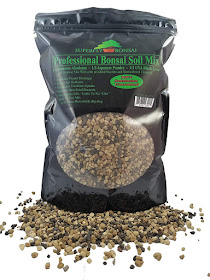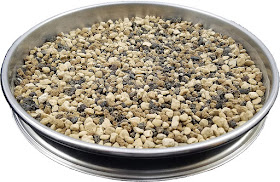The oriental art of Bonsai is very well known in the West. It’s surrounded by mystery and generates curiosity at first sight. Sometimes this interest just goes away with time, but in some cases, people like to dig deeper and get to know more about this beautiful miniature gardening technique. If you aim to cultivate Bonsai seriously, it might not be really cheap as professional tools alone may cost over $100 on average.
But to grow a bonsai it’s not only about gardening. It also has a therapeutic value, plus enables patience and fortitude and it’s a great activity for relaxing purposes. A bonsai can be with you until the end of your days. In fact, ancient Chinese believed that those who could take care of a miniature tree for a long time got eternity granted for their soul. For them, a tree could be the connection between the holy and the human, between heaven and earth.
The first records of people growing bonsai are located in China. However, the Japanese are responsible for developing and improving the art as we know it today. Contrary to what most people believe, bonsai's are not genetically dwarfed plants, they are kept small by a series of techniques and steps that, if done properly, would allow the tree to live as long as their original species. Any tree can be grown as a bonsai. However, you have to think about many details before starting.
BEFORE YOU START
Before asking yourself how to grow a bonsai, you should consider which species you would like to plant and also the conditions of your home, surrounding environment, and climate. There are a few options that could be good for starters, such as the Chinese elm and the Japanese black pine. Keep also in mind that any tree can become a bonsai, but details like leaf size should be thought about. A lot of people prefer trees with small leaves because are easier to model.
There’s also another consideration you should make when planning to grow a bonsai: There are many ways to do it. You could start from zero, which means buying seeds from a shop or picking them up near the trees around your home or in the wild. You could also find or buy a young plant, called a “prebonsai”, which consists of a germinated tree in its early stage. That way the whole process becomes faster, even though remember: to grow a bonsai is also an exercise of patience. The last option may be the easiest but also the least educational: that is to buy a full-grown bonsai. In that case, you would only have to do caring activities. It’s important to know: There are no “bonsai seeds”. If someone offers you such a product he’s either lying or don’t know much about bonsai. The seed which a bonsai comes from is just a regular tree seed, the process of making a bonsai comes later, after it is germinated.
THE CHEAPEST AND NICEST WAY
THE CHEAPEST AND NICEST WAY
To grow a bonsai from seed is a slow and hard-working process but is also the most rewarding way to do it. It may take years and you may fail at first, but as long as you keep trying and feel passionate about it you’ll be amazed by the results.
If you’re a starter then you’ll probably don’t want to wait that long for results. What most people recommend is to buy a pre-bonsai, or find one in a forest near your home (remember that a pre-bonsai is nothing more than a tree in its early stages). In case you decide on the second option there are many considerations. You need permission from the landowner to do it. Also, you have to be very careful not to damage the roots when digging. There is also a specific time of the year to do it: the first weeks of spring.
When you grow a bonsai from seed you should do the planting on autumn, so they start germinating in spring. It’s always better to select trees that can adapt easily to the climate of the place you live; that way it’ll work in our favor.
When searching for affordable bonsai, be sure to research the specific care requirements of the species you're interested in and evaluate the health of the tree before making a purchase. Bonsai trees can be delicate, and proper care is essential to maintain their beauty and longevity.
Interesting Books on Bonsai can be found here:
The Complete Book of Bonsai --> I've been into bonsai for 25 years and this is the basic Bible for beginner and intermediate bonsai enthusiasts. It has an excellent section on techniques, including pruning, wiring and whatnot, and it has a large species-specific tree guide. If you're into bonsai and want only one book, this is it.
Indoor Bonsai The Great Selection --> Creating beautiful, healthy bonsai is a wonderful skill that anyone can learn, with a little time, patience, and this all-inclusive manual. With color photos and drawings to illustrate the points, it introduces all the cultivation techniques; offers expert advice on location, soil types, watering, and pest control; and provides intricate instruction on training the bonsai--including pruning, wiring and stretching it.
The Secret Techniques of Bonsai --> In The Secret Techniques of Bonsai, the author of the groundbreaking Bonsai With American Trees teams up with his son to offer not only the basics for creating perfect bonsai, but also secret techniques they’ve developed over years of careful work and observation.
Bonsai Survival Manual --> Problem solving when your Bonsai get sick. Expand your gardening repertoire as you create a captivating and exquisite miniature world. In this introductory guide, Colin Lewis covers everything you need to know to design, grow, and successfully maintain attractive bonsai.
Bonsai and the art of Penjing --> Bonsai & Penjing, Ambassadors of Beauty and Peace describes how Chinese penjing and North American bonsai were later added to the Museum, making its collection the most comprehensive in the world. Stories of individual trees and forest plantings are featured, as are the roles played by the skilled and talented creators of these living art forms people such as John Naka, Saburo Kato, Yuji Yoshimura, Harry Hirao, and Dr. Yee-Sun Wu.
Bonsai with Japanese Maples --> With their delicate foliage, seasonal color changes, and intricate pattern of branching, Japanese maples are among the most popular and suitable plants for bonsai design. In this long-awaited book, internationally renowned expert Peter Adams discusses both the specific horticultural needs of Japanese maples as bonsai subjects and illustrates proven techniques for creating and maintaining beautiful specimens.
The Modern Bonsai Practice --> The most current, useful information on growing Bonsai. Fresh, practical, definitive, comprehensive reference guide to the finest art of horticulture: growing miniature trees. Common sense bonsai answers separating myth from fact with depth and detail. Appropriate for both bonsai hobbyists and experienced practitioners.



No comments:
Post a Comment